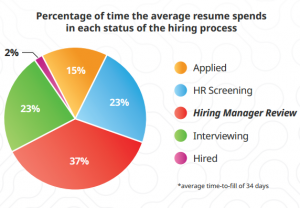Which AI Technologies Matter For Marketers?
by Ted Shaw , Op-Ed Contributor, September 1, 2017
Artificial intelligence is the single most-hyped trend of 2017. If you’re lived through big data and digital transformation, you may be skeptical that something else will come around next year, too.
I don’t think so. AI is really a bigger deal than what has come before and it’s hard to believe that it will be just another fad. Amazon Echo has established a foothold in over 10 million U.S. households (and is catching up to Siri’s 41.4 million users.) Do you really think that next year all of those users are going to put their Echos in storage? More likely, AI will continue its spread and marketers will try to catch up. A recent survey of 250 marketers, for instance, showed that 66% said they lacked a strategy for voice-based search.
In light of this, marketers are using AI to make their marketing better and more efficient. But not all flavors of AI are created equal. Here’s a list of AI marketing technologies, rated from least important to most:
1. Consumer-facing bots. Whether they’re on Facebook Messenger or manning the phone lines, a new generation of bots are interacting with consumers 24/7. For instance, Swedbank in Sweden uses Nuance Communications’ bot, Nina, to resolve 78% of consumers’ issues. (The rest go to a human.) As she compiles more data, Nina gets better and better at dealing with consumers’ queries. Companies that use such data can also uncover opportunities and product issues that help them refine their businesses. These are interesting, but let’s face it, they’re a gimmick at this point. Unlike Chinese WeChat users, American consumers only interact with marketing bots to try their own version of the Turing Test.
2. Facial recognition. While the idea of marketers using facial recognition might once again summon images of Tom Cruise in Minority Report, marketers in 2017 aren’t using it for that purpose — yet. Instead, they’re using facial recognition to gauge consumers’ reactions to ad exposure — as long as consumers consent to it. As anyone who has ever held a focus group will tell you, consumers often tell white lies. But their eyes don’t lie. The most audacious move in this direction is Disney’s neural network, which can watch viewers’ faces as they watch a movie to pick up reactions like laughter and smiles. Disney tested the network for The Jungle Book and Star Wars: The Force Awakens. This is interesting stuff, but for most, facial recognition is still just getting warmed up. Expect to see more in 2018.
3.Precision targeting. When you take into account their activity across desktop, mobile, social media and their real-life purchases, consumers leave behind a lot of actionable data. Too much, actually, for a human to keep track of. Machine learning does a much better job of finding patterns and commonalities among the data and then using predictive analysis to target consumers across a range of media. Still, we’re not quite there yet. That’s why you’re still seeing retargeting ads for stuff you’ve already bought.
4.Uncovering business opportunities. Every marketer knows that if they could just look at all their data, they could probably find some actionable business opportunities. The problem is, there’s too much data and too few people who can parse it out. Though having data scientists on hand will help tremendously, machine learning can help look for those usage patterns. For instance, a toothpaste maker might discover that its prime users are older than previously thought and step up their targeting and maybe make the writing on the packaging bigger to accommodate aging eyes.
5.Recommendations. Netflix is known for its “recommended for you” feature, which gives many a bored viewer something to watch on any given night. How valuable is this feature? Netflix recently reported that it’s good for $1 billion a year because it keeps subscribers from canceling. Amazon has a similar recommendation engine. Here, at last, is an AI technology that marketers are using and making lots of money from. The catch is that only a few, like Netflix and Amazon, are using it. Everyone else is looking increasingly vulnerable.
This list might look completely different next year. Chatbots will only get smarter, and targeting will only get better. But for now, the best use of AI for marketing is one that’s hard to replicate. Meanwhile, buckle your seat belts because we’re not even close to the apex of the AI hype cycle.
MediaPost.com: Search Marketing Daily
(61)
Report Post







